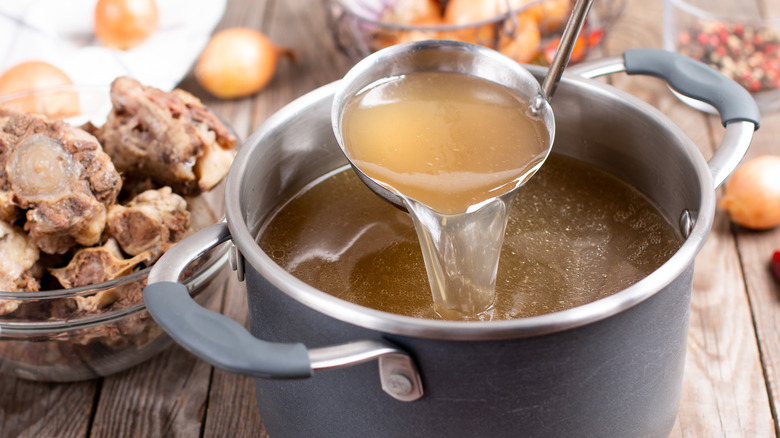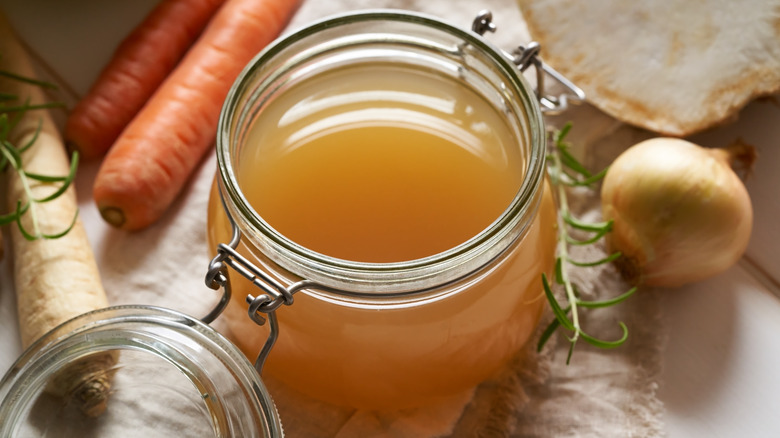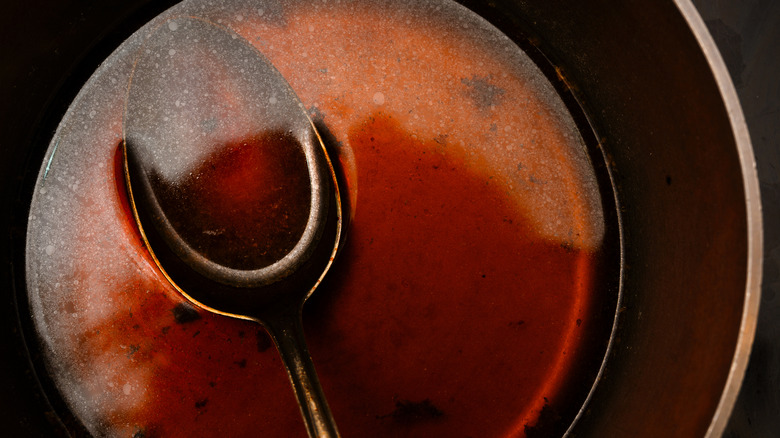Two Types Of Veal Stock, Explained
Veal is a staple of European cuisine, and similarly to other meats, its non-protein components can be used to create a widely used item in the kitchen: stock. Veal stock is prepared by simmering bones and marrow with hardy vegetables and fragrant herbs to produce a rich, flavorful cooking broth, which can be utilized in a variety of cuisine — most notably soups, stews, and sauces. Unlike other types of meat stock or bouillon, veal stock is more commonly used in professional kitchens and not always considered a household cooking staple. However, it has many simple and complex uses that could take your dishes to the next level of flavor.
Like other stocks available on the market, veal stock can be prepared in two varieties, white and brown, each with its unique applications. Knowing which stock to use will help you make the most of your recipe or meat-case purchase and, ultimately, elevate your cooking.
White veal stock: delicate and balanced
White veal stock is prepared by first releasing any impurities from the bones by blanching them separately before adding them to the stockpot. While all of the ingredients are simmering, any remaining impurities are skimmed from the surface to further filter out any undesirable elements that may not have been retrieved in the first step. This method results in a lighter coloring and a more neutral taste in the finished stock.
Lack of hue, however, does not mean a lack of flavor. White veal stock can be recommended in recipes needing a more delicate approach or as a substitute for light chicken stock. For everyday culinary uses, white veal stock can also be substituted for water as a savory alternative when cooking rice, pasta, or other absorbent stovetop grains to provide a depth of flavor or as the base for lighter soups and stews.
Brown veal stock: robust and distinct
Rather than removing the impurities like when preparing white veal stock, brown veal stock leans into the naturally occurring flavors these components add. Before the bones are submerged, brown veal stock calls for significant time roasting, caramelizing, and deglazing the bones and hardy vegetables. This step amplifies the rich flavor of the ingredients prior to adding them to the stockpot to simmer. The result is a liquid with a much darker hue, a velvety mouthfeel, and bursts of umami instead of just saltiness.
Even though brown veal stock is more robust than its white counterpart it still has several common applications in the kitchen — most often as a substantial base liquid for soups and stews. Brown veal stock may also be reduced further to exaggerate its bold flavors and create a thicker, syrupy sauce known as a demi-glace. Whether you're enjoying the unique wonders of French cuisine or simply trying to elevate your culinary experience at home, veal stock is an impressive way to appreciate more of your meal.


